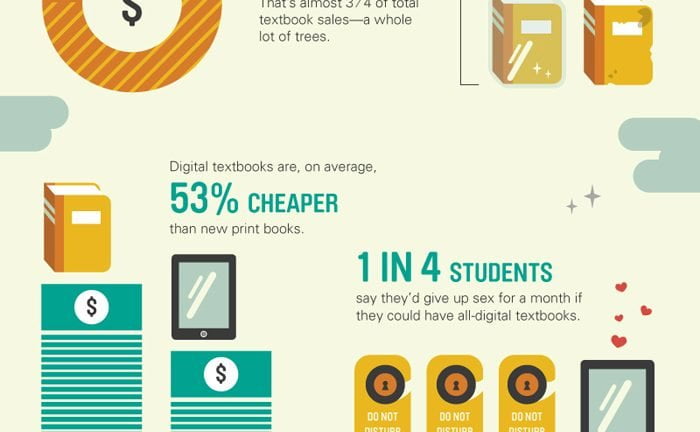The increase in digital textbook use by college students has given rise to some debate on whether the trend will really catch on or whether it is just a fad.
If you read my post on how online education is changing our learning system, you probably realize that e-learning and digital textbook use are everything but fads!
See Also: Will the iPad Replace College Textbooks [Infographic]
A great infographic (posted below) was recently released by OnlineEducation.net that demonstrates exactly how popular digital textbooks are becoming by providing statistical data in relation to digital textbook sales and usage.
Here are some of the more interesting facts that I found in the infographic:
- Digital textbooks are expected to account for almost 20% of all U.S. textbook sales by 2014.
- Between 2008 and 2009 there was a 400% increase in digital textbook sales.
- 42% of students in 2010 have at least seen or even bought a digital textbook.
- On average, digital texbooks are more than 50% cheaper than traditional textbooks.
Other than the statistical sales and usage information provided by the infographic, we’re also presented with some information on what type of content digital textbooks will contain in the future. This was the most exciting and eye-opening part of the infographic in my opinion.
Digital textbooks will feature rich-media content. In other words, there will be videos, games, sound and many other types of media embedding within your digital textbooks. Readers will be able to take online quizes after reading certain material to test their own comprehension.
As digital textbooks evolve, expect social media to be integrated into them as well. You will be able to chat and communicate with your classmates if they’re reading the same section of the textbook that you are.
Digital textbooks will be more entertaining, more educational and much more interactive than traditional textbooks. This will hopefully increase the rate at which students comprehend material and, at the same, increase students’ overall interest in the material by presenting it a more interactive and user-friendly manner.




